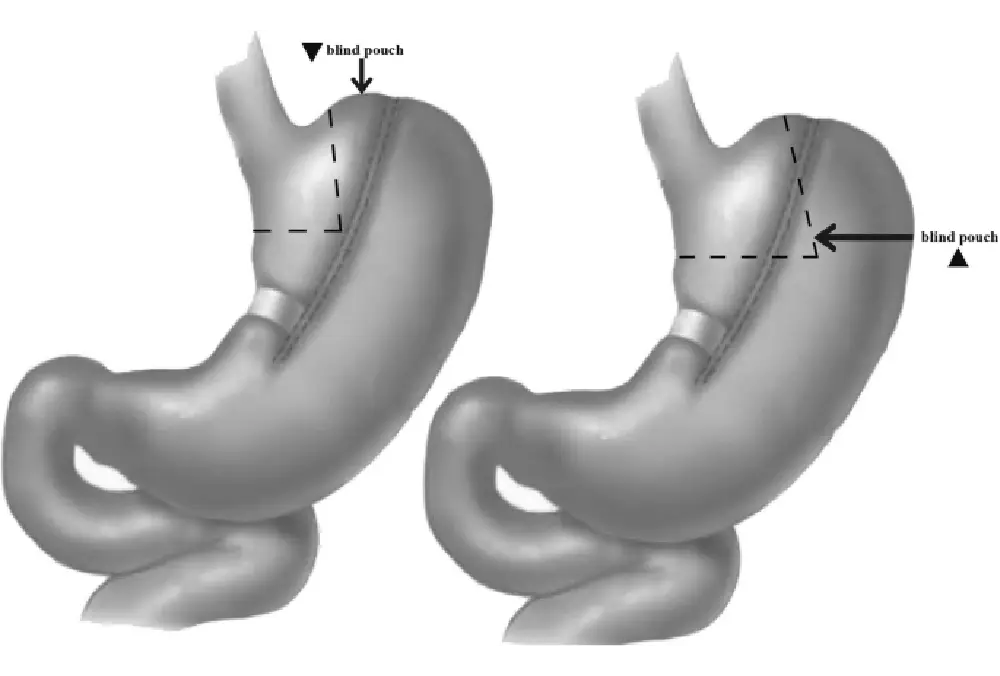Banded Roux-en-y Gastric Bypass Surgery
Home -> Banded Roux-en-y Gastric Bypass Surgery

- Laparoscopic Sleeve Gastrectomy
- Roux-en-Y Gastric Bypass Surgery
- Mini Gastric Bypass
- Endoscopic Sleeve Gastroplasty
- Single Anastomosis Duodenal Switch
- Duodenal Switch
- Revisions Surgeries
Overview
Banded Roux-en-Y Gastric Bypass Surgery is a variation of the traditional Roux-en-Y Gastric Bypass procedure, enhanced by the addition of a restrictive silicone band around the stomach pouch.
This modification aims to improve the long-term effectiveness of the surgery by addressing some limitations of the standard Roux-en-Y procedure, particularly weight regain over time.
How is it Different from Traditional Roux-en-Y?
In the traditional Roux-en-Y Gastric Bypass:
The stomach is reduced to a small pouch, and part of the digestive tract is bypassed.
Over time, the stomach pouch may stretch, and some patients may regain weight due to an increased ability to eat larger meals.
In the banded variation:
A medical-grade silicone band is placed around the newly created stomach pouch.
The band acts as an additional barrier, preventing the pouch from stretching and ensuring better portion control over the long term.
How Does Banded Roux-en-Y Work?
- Stomach Restriction:
Like the traditional Roux-en-Y, the stomach size is significantly reduced, which limits food intake. - Band Placement:
A silicone ring or band is positioned around the stomach pouch. This provides an extra level of restriction and ensures the pouch retains its small size, preventing dilation over time. - Digestive Tract Modification:
As with the standard procedure, part of the small intestine is bypassed to reduce calorie and nutrient absorption.
Benefits of Banded Roux-en-Y Gastric Bypass
- Enhanced Long-Term Weight Loss:
The band helps maintain the pouch’s small size, reducing the likelihood of weight regain. - Portion Control:
The band slows the passage of food, helping patients feel full longer and reinforcing portion control. - Improved Outcomes:
Studies have shown that banded Roux-en-Y can lead to better weight-loss maintenance compared to the traditional procedure.
Risks and Considerations
- Band-Related Complications:
The band may cause erosion, migration, or discomfort in some patients, requiring surgical adjustment or removal. - Nutritional Deficiencies:
Like the traditional Roux-en-Y, there is a risk of deficiencies in vitamins and minerals (e.g., B12, calcium, and iron). - Complexity:
Adding the band makes the procedure slightly more complex, potentially increasing surgery time and risks. - Lifestyle Adjustments:
Post-surgery, patients must adhere to strict dietary guidelines and take supplements to avoid complications and maintain weight loss.
Is Banded Roux-en-Y Right for You?
This procedure is typically recommended for patients with severe obesity (BMI ≥40 or BMI ≥35 with obesity-related conditions) who:
- Are concerned about weight regain after traditional Roux-en-Y surgery.
- Are committed to long-term dietary and lifestyle changes.
Conclusion
Banded Roux-en-Y Gastric Bypass Surgery combines the benefits of the traditional procedure with the added advantages of sustained portion control, making it a promising option for long-term weight management.
However, like all bariatric procedures, it requires a strong commitment to post-surgical care and lifestyle adjustments to achieve and maintain success.
